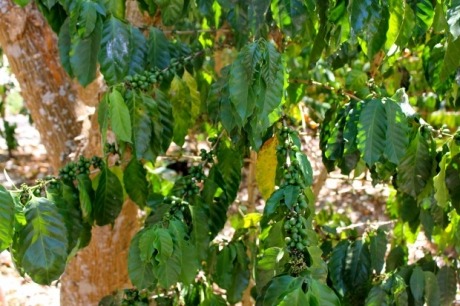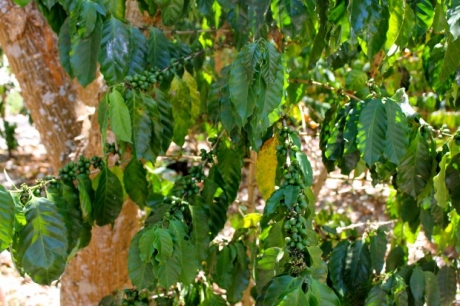Coffee 101: From Ground To Cup
In Hojancha, a small town nestled in the mountains of Costa Rica, coffee is life. The small co-op of Café Diria employs 187 associates from the area. Byron, a man of small stature and a bright smile, leads us around the vast equipment. He lasted a mere fifteen days as a coffee picker. "It's a very difficult job," he says. Too short to reach the highest cherries, he would pull the plant down to gather the fruit, accidentally snapping many of the fragile branches — he was fired.
Coffee in Costa Rica is grown and produced by small co-ops like this one. Founded 50 years ago by five families, the Café Diria coffee plantation is ingrained in the community, touching everyone in some way. In fact, many parents send their teenagers to the fields to learn responsibility, to earn their own.
Coffee is grown in the mountains, at higher altitudes. When harvest is finished, pickers are sent to collect the cherries — the fruit that yields coffee beans. The terrain is steep, and one must watch for venomous snakes, wasps, and other pesky animals. The farmers set out with baskets strapped to their waist, looking for ripe, red cherries, disregarding green ones that are not ready to be picked.
Nonetheless, it is a very social job — the farmers are out in the mountains together for long hours, five days a week, building a strong bond. They are not paid by the hour, but rather by the kilo; each hour must be fruitful.
The coffee is brought back to the plant and washed. The fruit of the cherry is removed, revealing two small green beans. The beans are covered in a "slime" which can ferment if not washed immediately, and are placed in a large tub of water to soak overnight, usually taking eight hours. (Unwashed beans are more aromatic and acidic, and can be dried by the sun. According to Byron, "the farmers prefer these").
The beans are then sent to dry in a chamber, to reach a certain humidity. After this they are further dried by machines fueled by wood that doesn't produce a strong, smokey smell — this could alter the taste. When dry, machinery is used to separate a final layer — a shell, or husk, covering the small green beans that will be exported.
A room with a large roaster and grinder is where small batches of the beans are roasted and served to a "taster." Above all else, "his opinion is absolute" in determining whether the coffee is good. (I later found out he spits the coffee out, crushing my dreams of perhaps finding the ultimate job in the world – to sit and taste coffee each day). Every remainder of the coffee is used — the shells to help fuel the dryer, the fruit as compost to fertilize the land, and the smaller, less quality beans for various coffee products — Kahlúa being one of them.
Though difficult, coffee farmers are grateful for a well paid, sustainable job. All coffee here is fair trade, ensuring farmers are treated fairly and ethically for their labor. 80 percent of the coffee produced at Café Diria is exported; "Costa Ricans drink the worst coffee, and export the best." A sad irony for a place that grows some of the finest coffee in the world.
Elizabeth Haddad writes about coffee in the blog, The Coffee Experiment.

